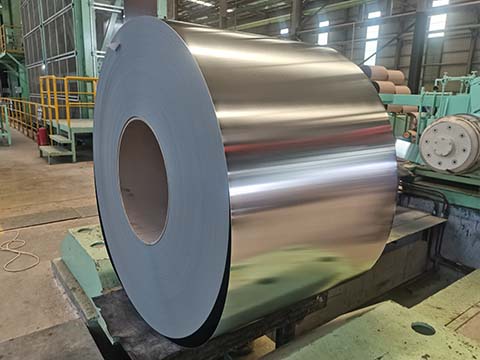Steps to Making High-Quality Cold Rolled Steel Coils
Contents |
[edit] Introduction
Cold rolled steel coils usually have a thickness ranging from 0.2 mm to 4 mm. They go through a complicated manufacturing process, involving heat treatment, cold rolling, and pickling.
[edit] Pickling
The hot rolled coils go through a pickling line consisting of hydrochloric acid solutions and scale breaker machines. These two systems remove any type of oxide film or surface scale on the rolls. Oxide films may cause surface flaws, thus reducing the overall quality of the rolls when they enter the cold rolling stage.
[edit] Cold rolling
Once the hydrochloric acid solutions and scale breaker machines remove the oxide films, the rolls go into the tandem mills one by one. The tandem mills are responsible for setting the thickness of the rolls. They can cut down the dimensions by up to 90%, depending on the requirement. Once the steel rolls pass through the tandem mills, there are no options to change their sizes.
[edit] Electrolyte cleaning
Cold rolled steel rolls contain a lot of contaminants and lubricant oil. Not cleaning them would lead to spots on the rolls. Electrolyte cleaning is essential to make sure that no roll contains even a speck of contaminant. Even a drop of oil may later look like a big spot.
[edit] Annealing or heat treatment
This is a crucial stage of producing high-quality cold rolled steel coils. In this stage, a two heat treatment method is used: continuous annealing and batch annealing. These two heat treatment methods are used simultaneously to provide high tensile strength to the rolls. The steel rolls also achieve better drawing qualities because of the multiple annealing methods.
[edit] Skin pass
The skin pass is a quality-check stage where the rolls go through a final rolling process. This rolling process can remove any sort of stretch marks or defects on the rolls. Once the rolls pass through this stage, you will see a smooth and lustrous surface. In addition to removing the stretch marks, the skin pass reduces the thickness of the coils by 1%.
Featured articles and news
A change to adoptive architecture
Effects of global weather warming on architectural detailing, material choice and human interaction.
How big is the problem and what can we do to mitigate the effects?
Overheating guidance and tools for building designers
A number of cool guides to help with the heat.
The UK's Modern Industrial Strategy: A 10 year plan
Previous consultation criticism, current key elements and general support with some persisting reservations.
Building Safety Regulator reforms
New roles, new staff and a new fast track service pave the way for a single construction regulator.
Architectural Technologist CPDs and Communications
CIAT CPD… and how you can do it!
Cooling centres and cool spaces
Managing extreme heat in cities by directing the public to places for heat stress relief and water sources.
Winter gardens: A brief history and warm variations
Extending the season with glass in different forms and terms.
Restoring Great Yarmouth's Winter Gardens
Transforming one of the least sustainable constructions imaginable.
Construction Skills Mission Board launch sector drive
Newly formed government and industry collaboration set strategy for recruiting an additional 100,000 construction workers a year.
New Architects Code comes into effect in September 2025
ARB Architects Code of Conduct and Practice available with ongoing consultation regarding guidance.
Welsh Skills Body (Medr) launches ambitious plan
The new skills body brings together funding and regulation of tertiary education and research for the devolved nation.
Paul Gandy FCIOB announced as next CIOB President
Former Tilbury Douglas CEO takes helm.
UK Infrastructure: A 10 Year Strategy. In brief with reactions
With the National Infrastructure and Service Transformation Authority (NISTA).
Ebenezer Howard: inventor of the garden city. Book review.
Airtightness Topic Guide BSRIA TG 27/2025
Explaining the basics of airtightness, what it is, why it's important, when it's required and how it's carried out.






















